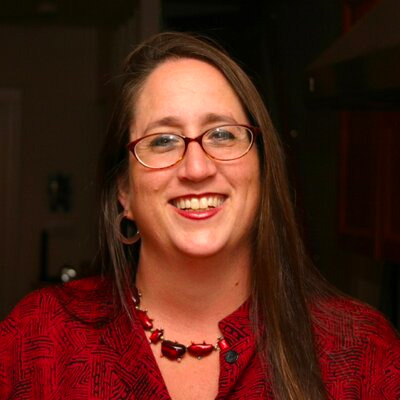The murders of George Floyd and Breonna Taylor have brought national focus on the systemic violence perpetuated against Black people. The enormity of the need for change has long been called for by people of color. The degree to which the white world has seen the need is questionable. Now in this moment of national attention, those of us who are steeped in this work have hope that some changes will happen, that attention will stay focused, and we know it is a long shot.
As makes sense in our current climate, schools and districts are increasing their focus on the conditions that create a sense of belongingness for students of color. Understanding that learning for students becomes much more difficult when students are in classrooms where they do not see their essential dignity honored, it makes sense to focus on
equity-based initiatives that will address school belongingness, ways to create culturally responsive classrooms, and recognize the funds of knowledge that students and their families bring to school.
But what does affirming dignity look like in schools, in classrooms?
A few years ago, a district in which I held a leadership role, experienced, as many school districts do, an outcry about issues with school climate in one of the schools. The superintendent decided that an investigation of climate was important in all schools. An expensive consultant was hired who collected months of focus group information and compiled a report of all the things that were “wrong”.
As happens in dysfunctional cycles of improvement, a focus on what’s wrong, rather than a focus on dignity resulted in a list of specific “grievances”. However, unique in this type of situation, school leaders were given all the “data” from the focus groups to look at.
As a trained qualitative researcher, the list of grievances for the district didn’t help me make sense of what was going on. It told part of the story, and didn’t attempt to look at issues underlying the grievances, it dismissed huge swaths of data about what was working, and gave no overarching support or window into how to create a plan to support overall health and belongingness.
What I found when I actually started to analyze the data was fascinating.
Two things stood out. First, the data was rich with descriptions and examples of the ways that leaders fostered community and belongingness for and across teacher groups and in different schools. Second, and what I want to dig into more, is what appears to be some universal themes or worries (across all aspects of working in schools) that impacted
teachers’ sense of belongingness, and I would further extrapolate, influenced their own sense of whether or not their own dignity was upheld in the school.
I’ve often talked about these as three essential themes as essential questions that leaders need to attend to as they build culture, community and connection in their buildings. They are simple, but profound. These concerns were raised across contexts – with building leaders, working in teacher teams, working in departments, working across the district.
- Do you see me?
- Am I good enough?
- Am I on the inside or the outside?
For teachers, these simple questions illuminate some of the essential vulnerabilities of being in connection.

Do you see me?
Do you see me raises the essential question of whether the leader (or peers) recognize and see the hard work the teacher is putting in, the identities that the teacher brings to school, the challenges of juggling competing demands and the care that they put into their teaching each day. For teachers of color, this is further complicated by whether or not the leader recognizes the reality of the impact of race on the lives of teachers in primarily white institutions.
Now in the time of pandemic, the question of being seen is even more important. How are we letting our teachers know we see them? We support them? We care about the specifics of their situations? How prepared are we as leaders to support our teachers of color, to push our white colleagues to acknowledge the experiences of people of color.
Am I good enough?
One of our core identities comes through our vocation. Being perceived as a “good teacher” is important to most if not all teachers in the field. We care about whether or not our colleagues think we are good at our jobs, and a leader’s evaluation of our job performance is particularly salient. Supervision and observation create anxiety because we care. While teachers (and administrators) often don’t express this out loud, this concern about performance is real.
- What do leaders do to create non-competitive, learning focused environments where teachers are able to take risks, dabble in new learnings, and try new things?
- How does culture and race influence the conversation of what behavior looks like in the classroom, of how parent interactions are handled?
Now in the time of the pandemic, all teachers have been asked to move hugely outside of their comfort zones. Teachers are teaching in ways that they have never done before, even if the school that they are in is actually back in person. How are we affirming the dignity and worth of our teachers – even as they take risks that they have never had to contemplate before? How are we supporting out teachers who are in Black and Brown communities that are bearing the brunt of COVID and racism?
Am I on the Inside or Outside?
All teachers, all people desire to be inside, a member of the “in crowd”, to feel a sense of belonging and connection. For teachers this plays out in a number of ways.
- Who is selected to be on a committee?
- Who has the ear of a leader?
- Who’s voice is amplified with other staff?
- Who has input in decisions?
Simple decisions such as who is invited to eat lunch together can create unintended but real feelings of inclusion or exclusion within groups of teachers. In dysfunctional schools, teachers form cliques and small groups gossip about others. Solidarity is sometimes generated by a collective small group bonding against a leader, an approach, or a district expectation. Certain teachers find they are on the outside of their teams or feel forced into conformity. Teachers of color experience additional barriers to inclusion.
Leaders can consciously acknowledge the impact of inside/outside structures, can examine policies that reinforce these structures, and can name the ways that these structures create inequities among staff. How are we creating multiple ways to go beyond a seat at the table to support staff to recreate the table?
What about students?
For teachers using a dignity frame to think about true inclusiveness and belongingness for BIPOC students, these three questions can form a frame for considering your actions.
Do You See Me?
All students want their dignity affirmed and to be seen for who they truly are.
- What have you done to learn who your students truly are?
- What do you know about their lives, their identities, their hopes and dreams?
- How are you showing your students you “see” them?
- How are you showing students who you are?
- What structures do you have in place that will help you challenge yourself to see beyond your assumptions about students?
- How will you invite students to correct your assumptions or add to your knowledge if you have “missed something” about them?
- How will you accept their feedback?
- How will you make repairs?
Am I Good Enough?
Even when we don’t wish to, we all care what others think. Students are impacted by the words we use, the language we use to describe them, and often learn more from our non-verbal cues about what we think about them than what we actually say.
How are you conveying each day that
- I believe in you
- I know you can do this
- I will support you when it is hard?
Our society sends pervasive subtle and overt messages about Black and Brown students that label them troublemakers, lazy, deficient, angry, dangerous. What are your countermeasures, what are your affirmations? If you are looking to give students “equal” time, affirmation, attention, your Black and Brown students are still getting less given the obstacles that they need to overcome. How are you acknowledging untaught histories, racism, discrimination and sanctioned laws that oppress?
Am I on the Inside or Outside?
The structure of our society puts our students of color, our Black and Indigenous students perpetually on the outside. Four hundred years of laws, policies, policing and educational inequities have reinforced a system that elevates some and marginalizes others.
- How do structures in your classroom and school continue to privilege students who fit the school’s image of “good students”, who speak strong English, who tell stories in short, compact narratives? Whose speech, behavior or patterns of interaction don’t conform to white middle class norms?
- What do you do to create leadership opportunities for students of color? • What counter stories do you tell about students when teachers complain about students they have had in the past?
- How do you create equity in your classroom rather than equality so that students who are least likely to see themselves at the table get asked to be there regularly?
For years as a principal, I kept the three questions, Do you see me?, Am I good enough?, and Am I on the Inside or Outside?, as essential questions to guide creating an inclusive school in which all teachers felt a strong sense of belongingness. We talked about these questions, unpacked our policies and school leadership practices in relation to them, and used them to have difficult conversations with colleagues and friends.
Now more than ever, I see that these three questions have much wider application than I originally envisioned. We need to explicitly bring these questions into our classrooms. We needed to use them to monitor the ways that student belongingness is supported. We needed to use them to challenge the ways in which we are setting up classrooms in which dignity is truly foregrounded.
Yes, we need to recommit to “seeing” all our students.
Our students of color need us to see them, each of them, to understand that what they bring, their ways of being, and to honor their essential dignity by actively setting up our classrooms and schools in ways that counter how students and communities have been portrayed dismissed, marginalized and criminalized in the past and present.
Belongingness and dignity are needed by everyone. When our schools create belongingness for the adults, adults learn patterns and models of inclusiveness, when we can keep our own vulnerability and the vulnerability of our students at the center, we can bring intention to dismantling systems that often float outside our conscious control.
How might you use the three questions to help build trust, belonging and a sense of dignity for your students, for your staff, for your leadership team?


